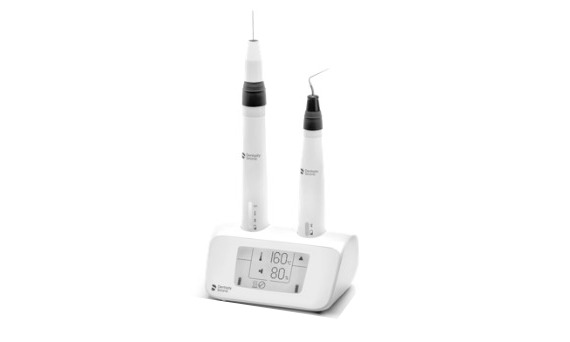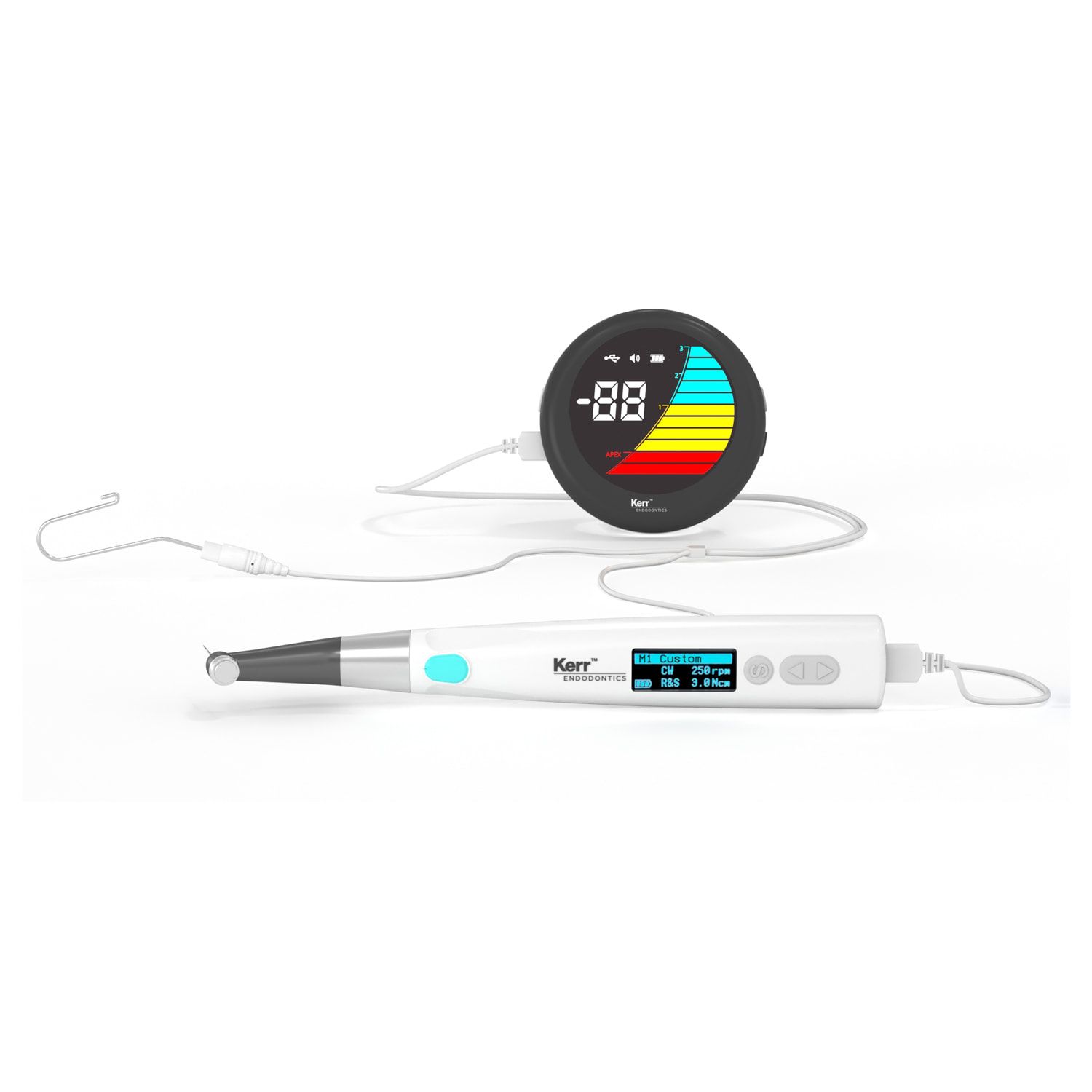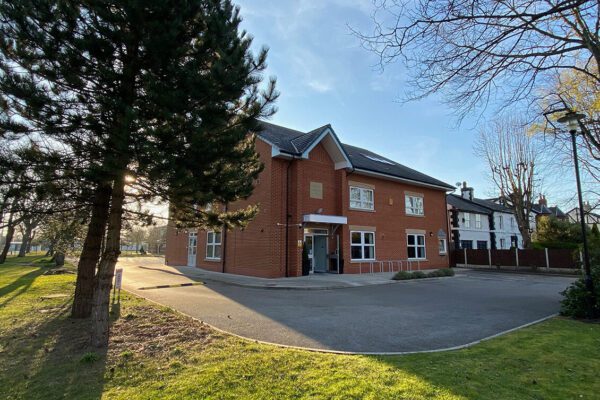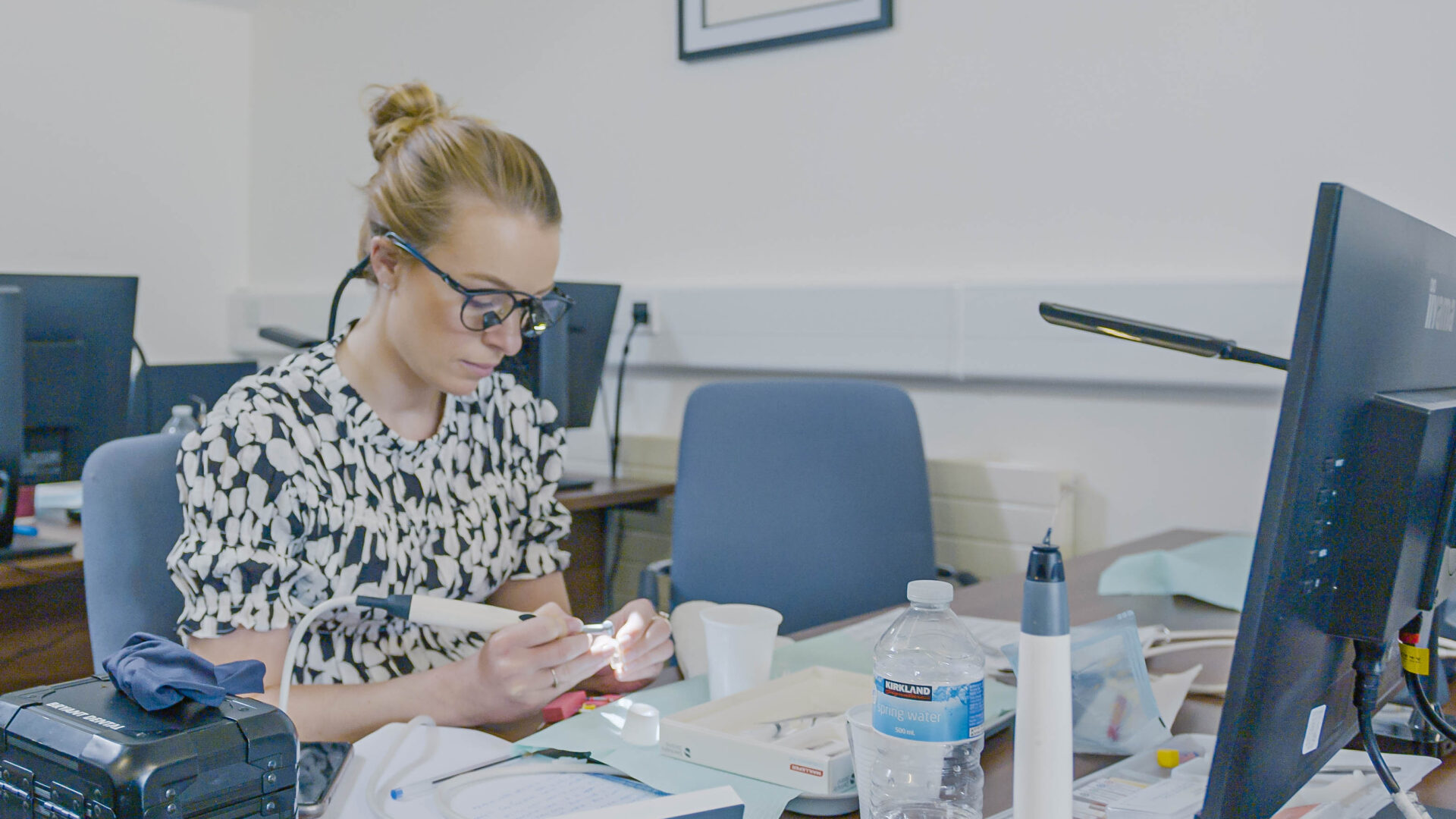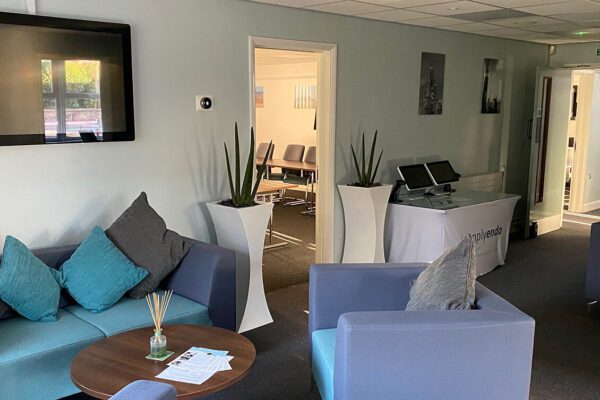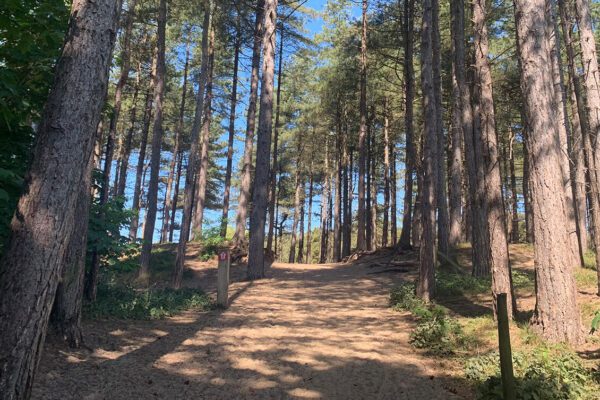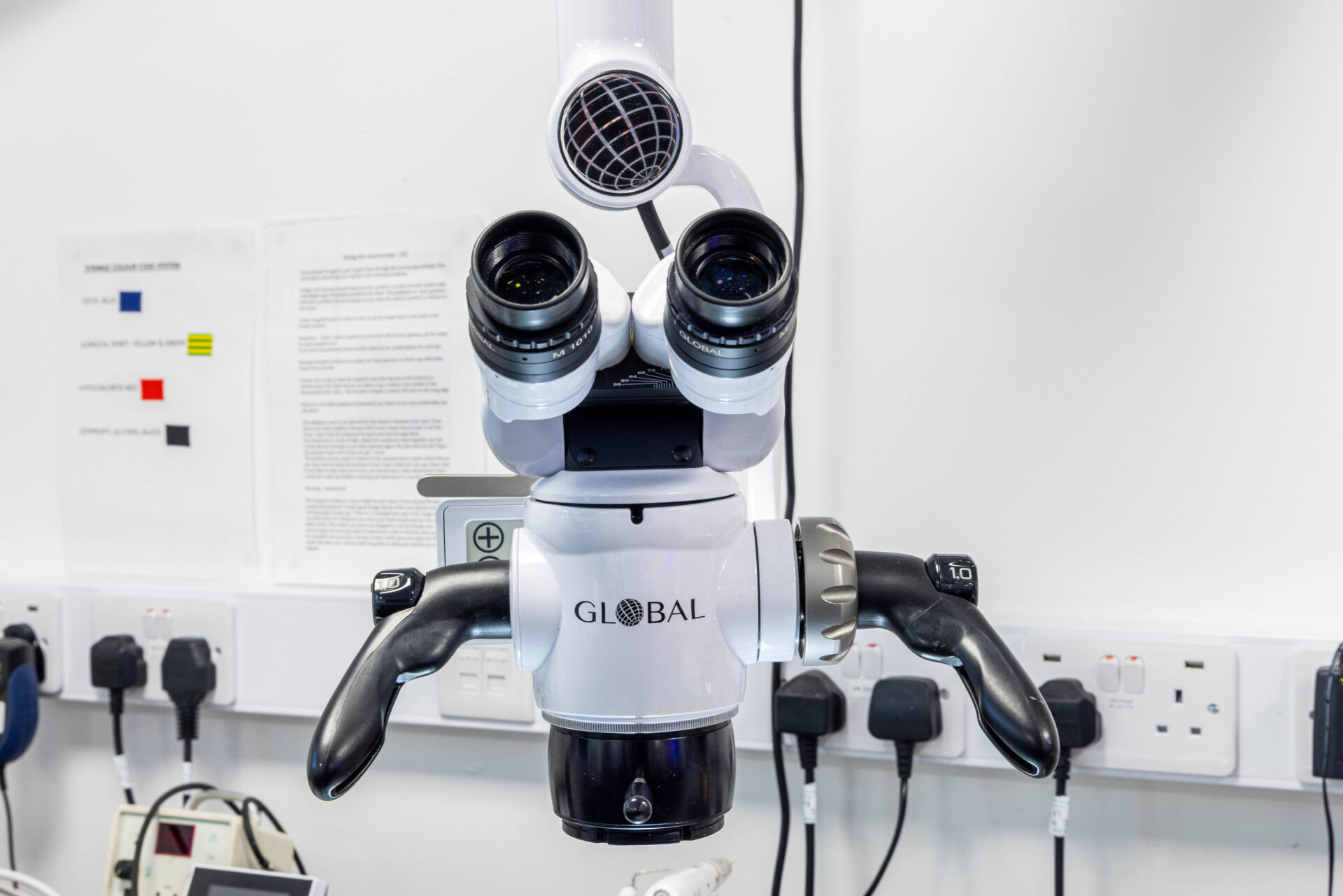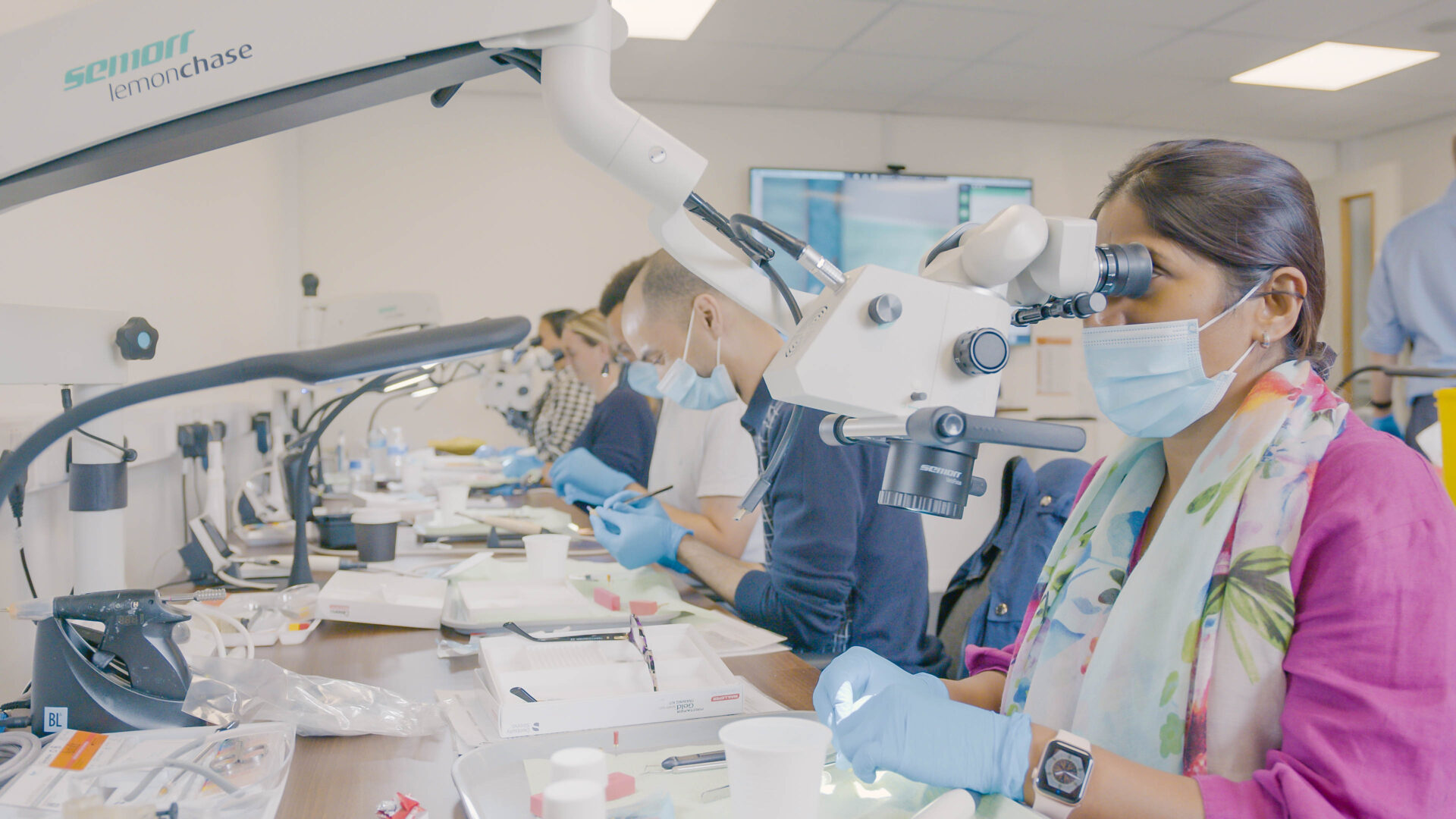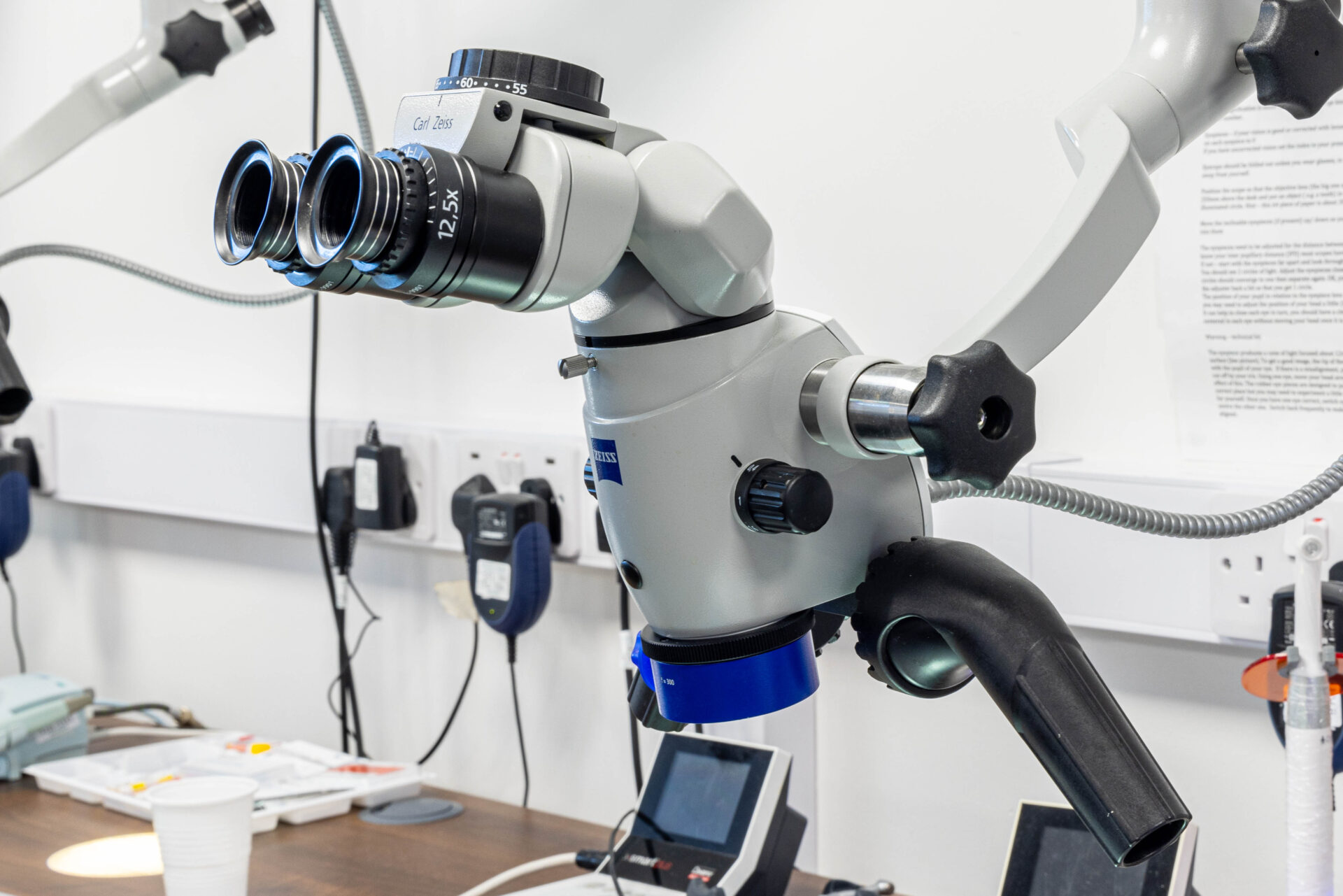Forensic dentistry or forensic odontology is the application of dental knowledge and sciences to civil and criminal law. Generally we get involved in identification of human remains from teeth, age estimation of the living and dead, identification in mass disasters and bite mark analysis.
My first experience with forensic dentistry came during my undergraduate years when I went on my elective in South Africa. During this time I had firsthand experience of numerous forensic cases at weekly sessions at the Salt River Mortuary. After graduating and working in practice I kept a keen interest in forensics and following getting some research published on bite mark analysis I took the plunge a started a PhD in forensic dentistry. This gave me an opportunity to study part-time and be mentored in forensic casework by my supervisor Professor Geoff Craig. Most of my casework now involves human and dog bite mark injury assessment and analysis (75% of my cases) and identification of human remains (25%) with the odd miscellaneous case such as age estimation.
When I’m not doing CSI dentistry I work in general practice but I have an interest in endodontics which started 18 years ago. When I first graduated, endodontics was not something I relished, however in 1998 I attended a course by Julian Webber. This was a revelation, suddenly endo was full of interest and gadgets! After a number of years and various courses I developed an interest in endodontics and soon started receiving referrals for re-treatments from colleagues I knew. This grew and whilst more referrals were good the complexity was increasing. simplyendo provided me with a course that expanded my knowledge with a formal course and a forum to discuss cases with colleagues. Whilst I still have my own practice in Sheffield, I have had the opportunity to work part-time in Jersey limiting my practice there to endodontic referrals and then in 2014 I joined simplyendo Clinical team.
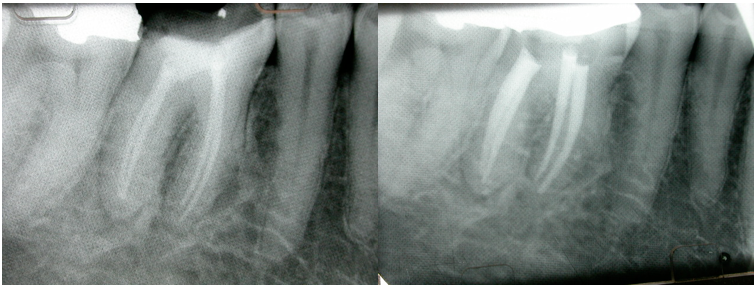
Re-treatment undertaken 16 years ago with hand GT Files and Cold-Lateral Condensation
Example case
This case involved the identification of a decomposed and partially mummified male individual who had been found at home. The back door to the property was open and as a result formal identification of the remains was required to confirm the presumed identity.
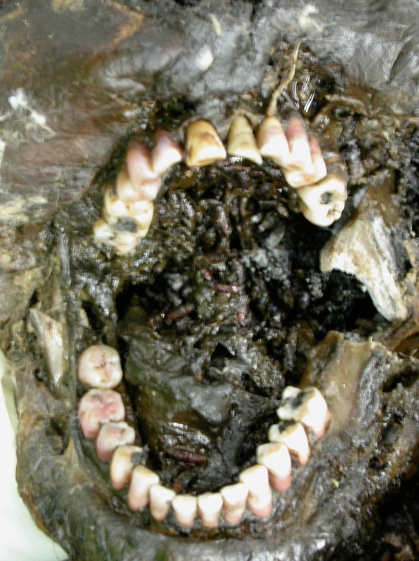
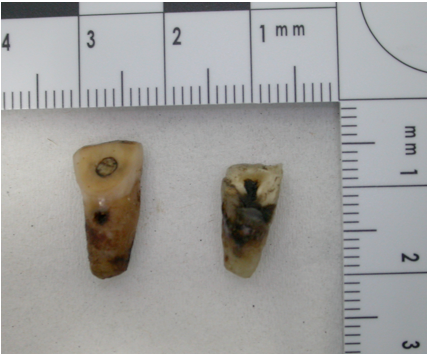
From my post-mortem examination I could produce a chart for the individual which contained numerous restorations, but more significantly two anterior teeth that had been prepared for porcelain veneers which had been lost, and a root-treated upper right central incisor. Both the upper central incisors were loose as a result of the post-mortem changes. The root-treated anterior tooth was radiographed to allow comparison with the ante-mortem film.
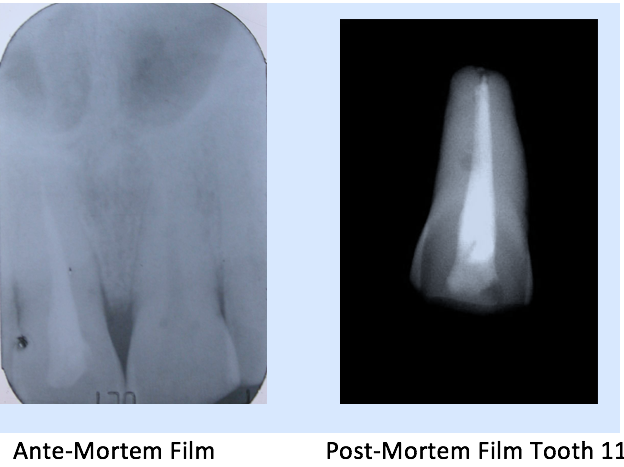
By comparing the post-mortem chart and radiographs with the ante-mortem data I was able to provide a positive identification for the Coroner and closure for the family.

